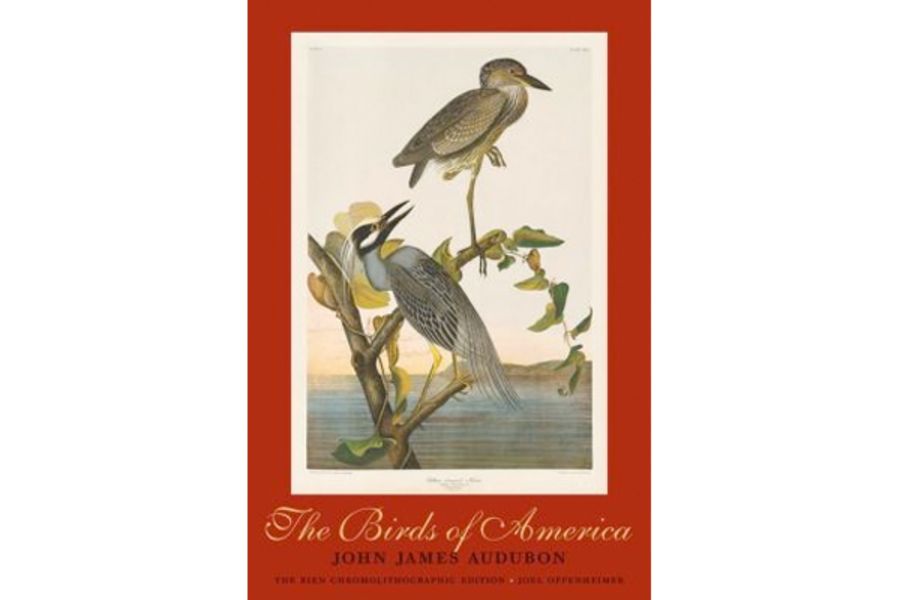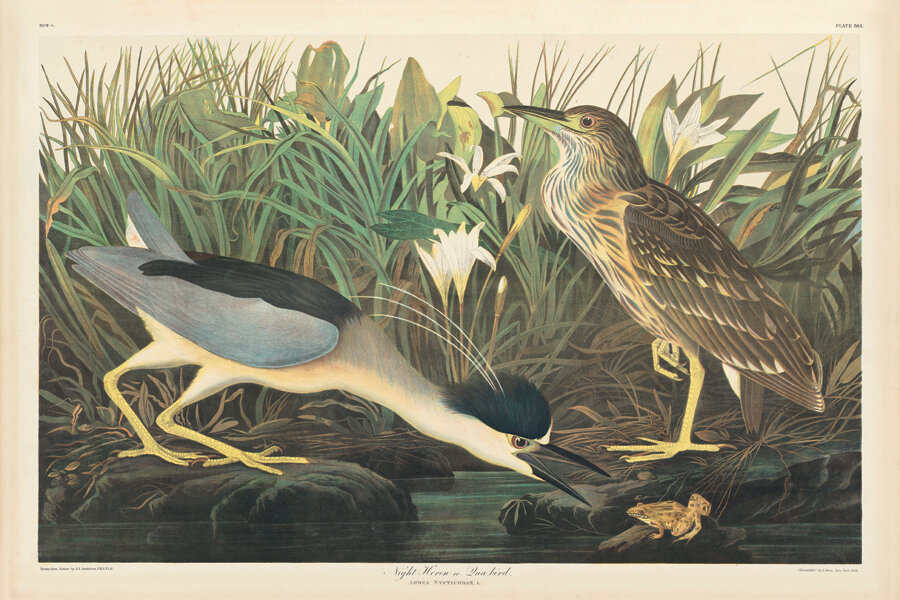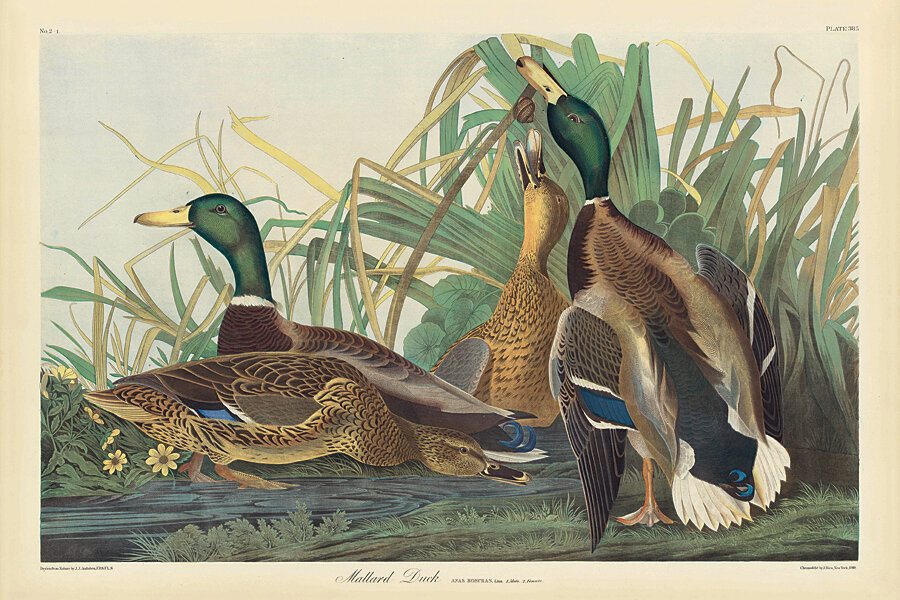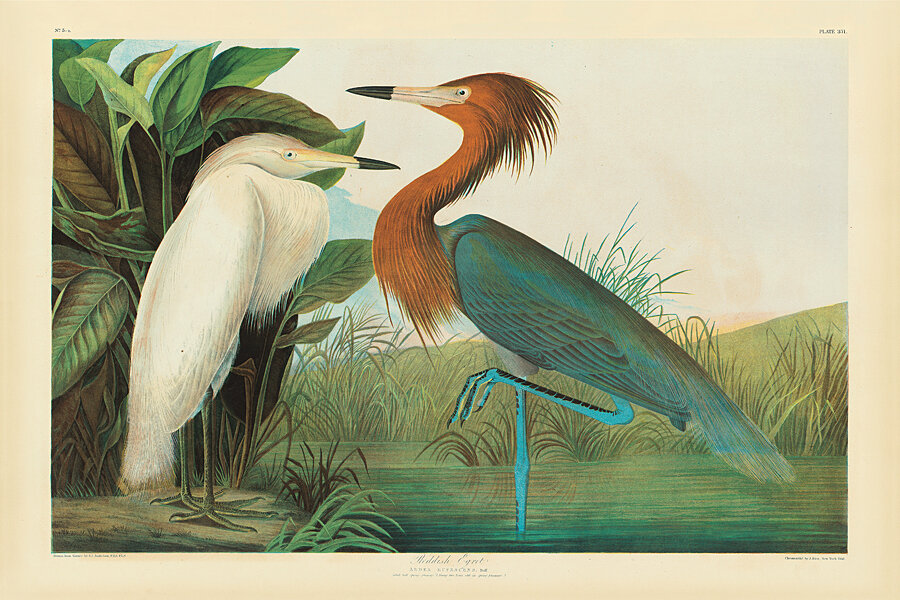One of 2013's most expensive books may also be one of the most beautiful
Loading...
Although there’s no official word from the publishing industry about what ranks as the most expensive new retail book of 2013, here’s a leading candidate: a new edition of John James Audubon’s “The Birds of America” that W.W. Norton & Company released this autumn for a list price of $350.
Little wonder that Norton’s Audubon book carries such a handsome price tag. “The Birds of America” has a long history of sticker shock. Audubon first issued his lavish collection of 435 bird prints in four volumes between 1827 and 1838. The books were massive, with pages more than two feet wide and more than a yard high, a design meant to accommodate Audubon’s desire to depict even big birds life-size. Because of their scale, and the exacting production values, Audubon’s first edition of “The Birds of America” costs $1,000 a set – about $23,000 in today’s dollars. Only large institutions and the very wealthy could afford that edition but a smaller, cheaper edition served a broader audience, helping to establish Audubon’s fortune.
After Audubon’s death in 1851, his son, John Woodhouse Audubon, in collaboration with New York printer Julius Bien, attempted to publish another version of “The Birds of America” using a new printing technology called chromolithography. He hoped the emerging technique would bring another dimension to his father’s art. But the Civil War disrupted the project, which eventually ended in financial ruin. Only 150 plates were produced.
This fall, Norton published “John James Audubon: The Birds of America: The Bien Chromolithographic Edition,” billed as the first complete reproduction of the Bien chromolithographs. Joel Oppenheimer, an art conservator who’s one of the nation’s foremost Audubon authorities, oversaw the project and wrote the text for the book.
Although not as large as Audubon’s original edition of “The Birds of America,” Oppenheimer’s version is still a biggie. It weighs 33 pounds, with pages that are more than 20 inches tall and 13 inches wide. The book features blockbuster production values, with designer paper from Italy, where the volume was printed.
At $350, this new Audubon book might, indeed, be the most expensive new retail title of 2014.
But it could also be the most beautiful.
Danny Heitman, a columnist for The Advocate newspaper in Louisiana, is the author of “A Summer of Birds: John James Audubon at Oakley House.”










